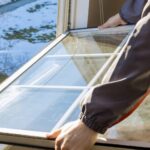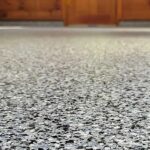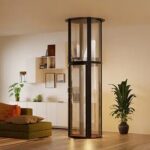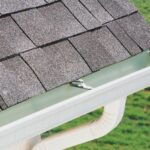Proper roof ventilation is essential for maintaining a healthy and functional home. It plays a critical role in protecting the overall structural integrity of the roof, preventing moisture buildup, and improving energy efficiency. By allowing air to circulate effectively through the attic and the rest of the house, proper roof ventilation helps to regulate temperature, remove excess humidity, and prevent damage caused by condensation.
Benefits of Proper Roof Ventilation
There are several benefits to having proper roof ventilation in your home:
- Temperature Regulation: Proper roof ventilation helps to regulate the temperature in your attic and home. During hot summer months, it allows hot air to escape, preventing the buildup of heat and reducing the strain on your air conditioning system. In the winter, it helps to prevent the condensation of warm air, reducing the risk of ice dams and preventing damage to the roof.
- Moisture Control: Roof ventilation allows excess moisture and humidity to escape from the attic. This helps to prevent the growth of mold and mildew, which can lead to health issues and structural damage. It also helps to reduce the risk of rot and decay in the roof structure.
- Energy Efficiency: Proper roof ventilation can improve the energy efficiency of your home. By reducing the strain on your HVAC system, it can help lower energy costs and extend the lifespan of your cooling and heating equipment.
- Extended Roof Lifespan: Adequate roof ventilation helps to prevent excessive heat buildup in the attic, which can cause shingles to deteriorate prematurely. By maintaining a consistent and moderate temperature, proper roof ventilation can extend the lifespan of your roof.
Common Issues Caused by Poor Roof Ventilation
When a home has poor roof ventilation, several issues can arise:
- Excessive Heat: Without proper ventilation, heat can build up in the attic, causing temperatures to soar to dangerously high levels. This heat transfer can also affect the living spaces beneath, making rooms uncomfortable or requiring additional cooling.
- Moisture Buildup: Inadequate roof ventilation can lead to moisture buildup in the attic. This can result in condensation forming on the underside of the roof deck, leading to mold growth, rot, and structural damage.
- Ice Dams: In colder climates, poor ventilation can contribute to the formation of ice dams on the roof. These ice accumulations prevent proper drainage, causing water to back up under the roof shingles and potentially infiltrate the interior of the home.
- Reduced Energy Efficiency: Without proper ventilation, air conditioning systems have to work harder to cool the home in the summer and heating systems have to work harder to warm the home in the winter. This can lead to increased energy consumption and higher utility bills.
Tips for Maintaining Proper Roof Ventilation
Regularly cleaning and maintaining your roof ventilation system is crucial for ensuring proper airflow and optimal performance. Here are some tips to help maintain proper roof ventilation:
Regularly clean and clear roof vents
Roof vents can become blocked by debris, such as leaves and twigs. Regularly inspect and clean these vents to ensure that airflow is not restricted.
Inspect and maintain soffit vents
Soffit vents play a crucial role in facilitating airflow into the attic. Regularly inspect these vents and make sure they are not blocked or damaged. Replace any damaged vents to ensure proper ventilation.
Ensure proper insulation in the attic
Proper insulation in the attic helps to prevent heat transfer from the living spaces to the attic. It also helps to maintain a consistent temperature, reducing the risk of condensation and heat buildup. Inspect and update insulation as needed to ensure optimal efficiency.
Consider attic ventilation fans
Attic ventilation fans can help to improve airflow in the attic and remove excess heat. These fans can be installed in conjunction with existing roof vents to enhance ventilation.
Consult with a professional for advice and maintenance
If you are unsure about the state of your roof ventilation system or need assistance with maintenance, it is recommended to consult with a professional la roofers. They can provide expert advice, perform inspections, and make necessary repairs or upgrades to ensure proper roof ventilation.
Different Types of Roof Ventilation Systems
There are several types of roof ventilation systems available, each with its own advantages and applications. Here are some of the most common types:
1. Ridge Vents
Ridge vents are installed along the ridge of the roof. They promote natural airflow by allowing hot air to escape from the attic and cool air to enter through the soffit vents.
2. Gable Vents
Gable vents are located at the gable ends of the house. They provide ventilation by allowing hot air to escape from the attic and fresh air to enter.
3. Soffit Vents
Soffit vents are installed in the underside of the eaves. They allow fresh air to enter the attic and promote airflow.
4. Power Vents
Power vents are motorized fans installed on the roof. They help to expel hot air from the attic and improve overall ventilation.
5. Turbine Vents
Turbine vents are rooftop vents that use wind power to create airflow in the attic. As the wind blows, it spins the turbine, drawing hot air out of the attic.
Signs of Inadequate Roof Ventilation
Recognizing the signs of inadequate roof ventilation is important for addressing potential problems. Here are some common signs to watch out for:
1. High Energy Bills
If your energy bills are consistently high, inadequate roof ventilation may be a contributing factor. Excessive heat buildup in the attic can cause your HVAC system to work harder to maintain a comfortable temperature.
2. Excessive Heat in the Attic
If your attic feels excessively hot, even on mild days, it may indicate poor ventilation. The trapped heat can lead to increased energy costs and may damage the roof and shingles.
3. Mold and Mildew Growth
Unexplained mold or mildew growth in the attic or on ceilings can be a sign of poor ventilation. Moisture buildup from inadequate airflow can create the perfect environment for mold and mildew to thrive.
4. Ice Dams on the Roof
The formation of ice dams along the roof edges in cold weather can indicate poor roof ventilation. Ice dams are caused by heat escaping from the attic, melting snow on the roof, and refreezing at the eaves.
5. Premature Roof Aging and Damage
Excess heat and moisture in an improperly ventilated attic can accelerate the aging process of the roof, leading to premature wear and damage. Shingles may deteriorate faster and require early replacement.
Importance of Professional Roof Ventilation Installation
While some homeowners may attempt to install or modify their roof ventilation system themselves, it is important to recognize the value of professional installation. Professional roofers have the knowledge, skills, and experience to properly assess a home’s ventilation needs and recommend the most suitable system. They can ensure that the installation is done correctly, avoiding potential issues and ensuring optimal performance.
Cost Considerations for Roof Ventilation
The cost of roof ventilation can vary depending on factors such as the size of the home, the type of ventilation system, and the complexity of the installation. It is recommended to obtain multiple quotes from professional roofers to compare costs. While there may be upfront expenses associated with installing or upgrading a ventilation system, the long-term benefits in terms of improved energy efficiency and reduced potential for damage make it a worthwhile investment.
Eco-Friendly Roof Ventilation Options
For homeowners concerned about minimizing their environmental footprint, there are eco-friendly roof ventilation options available. These options focus on maximizing natural airflow and reducing the need for mechanical ventilation. Solar-powered attic fans, for example, harness the power of the sun to help ventilate the attic. Additionally, using sustainable, recycled, or energy-efficient materials in the construction of the roof and ventilation system can further enhance its eco-friendly performance.
Roof Ventilation in Different Climates
The climate in which a home is located plays a significant role in determining the ideal ventilation system. In hot and humid climates, it is crucial to have a ventilation system that effectively removes excess heat and humidity. In colder climates, proper ventilation helps to prevent ice dams and moisture buildup. Consulting with a professional roofer who understands the specific requirements of your climate can help ensure that your roof ventilation system is effective year-round.
Case Studies: Real-Life Examples of the Impact of Proper Roof Ventilation
Real-life case studies can provide valuable insights into the impact of proper roof ventilation. These examples can highlight the benefits of ventilation systems in different scenarios and help homeowners make informed decisions about their own ventilation needs. For example, a study may showcase how proper roof ventilation improved energy efficiency and reduced cooling costs for a homeowner in a hot climate. Another study may demonstrate how addressing inadequate ventilation prevented mold growth and structural damage in a home.
Frequently Asked Questions about Roof Ventilation
1. How does roof ventilation work?
Roof ventilation works by allowing air to circulate through the attic and rest of the house. It involves the use of vents, such as ridge vents, gable vents, and soffit vents, to facilitate the intake and exhaust of air. This promotes airflow, regulates temperature, and prevents moisture buildup.
2. Why is proper roof ventilation important for energy efficiency?
Proper roof ventilation helps to regulate the temperature in the attic, reducing the strain on your HVAC system. By preventing heat buildup and promoting airflow, it can improve energy efficiency and lower cooling and heating costs.
3. What are the signs of inadequate roof ventilation?
Signs of inadequate roof ventilation include high energy bills, excessive heat in the attic, mold and mildew growth, ice dams on the roof, and premature roof aging and damage.
4. What are the different types of roof ventilation systems available?
The different types of roof ventilation systems include ridge vents, gable vents, soffit vents, power vents, and turbine vents. Each system has its own advantages and applications, and the choice depends on factors such as the size and design of the home.
5. Is professional installation required for roof ventilation systems?
While some homeowners may choose to install or modify their roof ventilation systems themselves, professional installation is recommended. Professional roofers have the expertise to assess the ventilation needs of a home and ensure that the system is installed correctly for optimal performance.

 How to Choose the Right Window Replacement Contractor
How to Choose the Right Window Replacement Contractor  The Best Aircon servicing Singapore Maintaining Coolness by Performing Top-Quality Maintenance
The Best Aircon servicing Singapore Maintaining Coolness by Performing Top-Quality Maintenance  Why Columbus Homeowners Are Falling in Love with Epoxy Garage Floor Coatings
Why Columbus Homeowners Are Falling in Love with Epoxy Garage Floor Coatings  Flood Cleaning Services in Fort Worth, TX: Essential Steps to Restore Your Home
Flood Cleaning Services in Fort Worth, TX: Essential Steps to Restore Your Home  The Benefits of Caesarstone Quartz: Style, Strength, and Sustainability
The Benefits of Caesarstone Quartz: Style, Strength, and Sustainability  Are Home Elevators Worth the Investment? A Canadian Homeowner’s Guide
Are Home Elevators Worth the Investment? A Canadian Homeowner’s Guide  5 Common Gutter Problems That Gutter Guards Can Solve
5 Common Gutter Problems That Gutter Guards Can Solve  How a Whole-House Humidifier Can Help With Your Health
How a Whole-House Humidifier Can Help With Your Health  Master Bathroom Remodeling: Essential Tips for a Stylish Upgrade
Master Bathroom Remodeling: Essential Tips for a Stylish Upgrade 